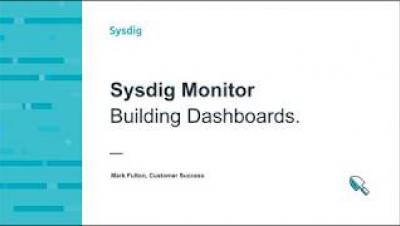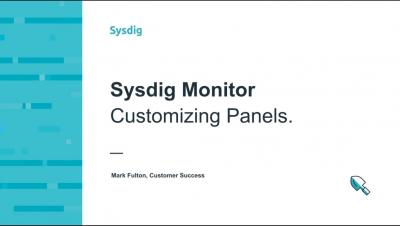Operations | Monitoring | ITSM | DevOps | Cloud
Containers
The latest News and Information on Containers, Kubernetes, Docker and related technologies.
Sysdig Monitor: Customizing Panels
Sysdig Monitor: Sharing Dashboards & Groupings
Image Management & Mutability in Docker and Kubernetes
Kubernetes is a fantastic tool for building large containerised software systems in a manner that is both resilient and scalable. But the architecture and design of Kubernetes has evolved over time, and there are some areas that could do with tweaking or rethinking. This post digs into some issues related to how image tags are handled in Kubernetes and how they are treated differently in plain Docker.
Introduction to Kubernetes Namespaces
Kubernetes clusters can manage large numbers of unrelated workloads concurrently and organizations often choose to deploy projects created by separate teams to shared clusters. Even with relatively light use, the number of deployed objects can quickly become unmanageable, slowing down operational responsiveness and increasing the chance of dangerous mistakes.
Zero Trust Security: Supporting a CARTA approach with Network Security
Exception Perceptions: KonMari Your Containers with Kubernetes
On this episode of Exception Perceptions, Katy Farmer, InfluxData’s Developer Advocate, tells us all about Kubernetes (also known as K8s). Watch the episode, and then accompany Katy on her journey to uncover the “captain” of containerization’s secrets.
Why I Changed My Mind and Embraced Managed Kubernetes Services
I am embracing managed Kubernetes services and here’s my journey. While I attended KubeCon 2018 ready to soak up all I could about Kubernetes and the cloud-native ecosystem, I sought to learn as much as I could to aid me in running my clusters day to day. More importantly, though, I experienced a fundamental shift in what I see as the future of Kubernetes, and what getting started in Kubernetes looks like for companies today.
Monitoring Kubernetes + Docker, part 2: Prometheus
In part 1 of this series, I discussed the rise of microservice architecture and the reliance on Kubernetes and Docker for container orchestration and management. I also shared some of the challenges these new technologies present and what sources of data we need in order to effectively monitor our Kubernetes environments.
101 More Security Best Practices for Kubernetes
This article analyzes the recent CNCF article, '9 Kubernetes Security Best Practices Everyone Must Follow' and discusses how Rancher, RKE, and RancherOS satisfy these by default. I also discuss the Rancher Hardening Guide, which covers 101 more security changes that will secure your Kubernetes clusters.










